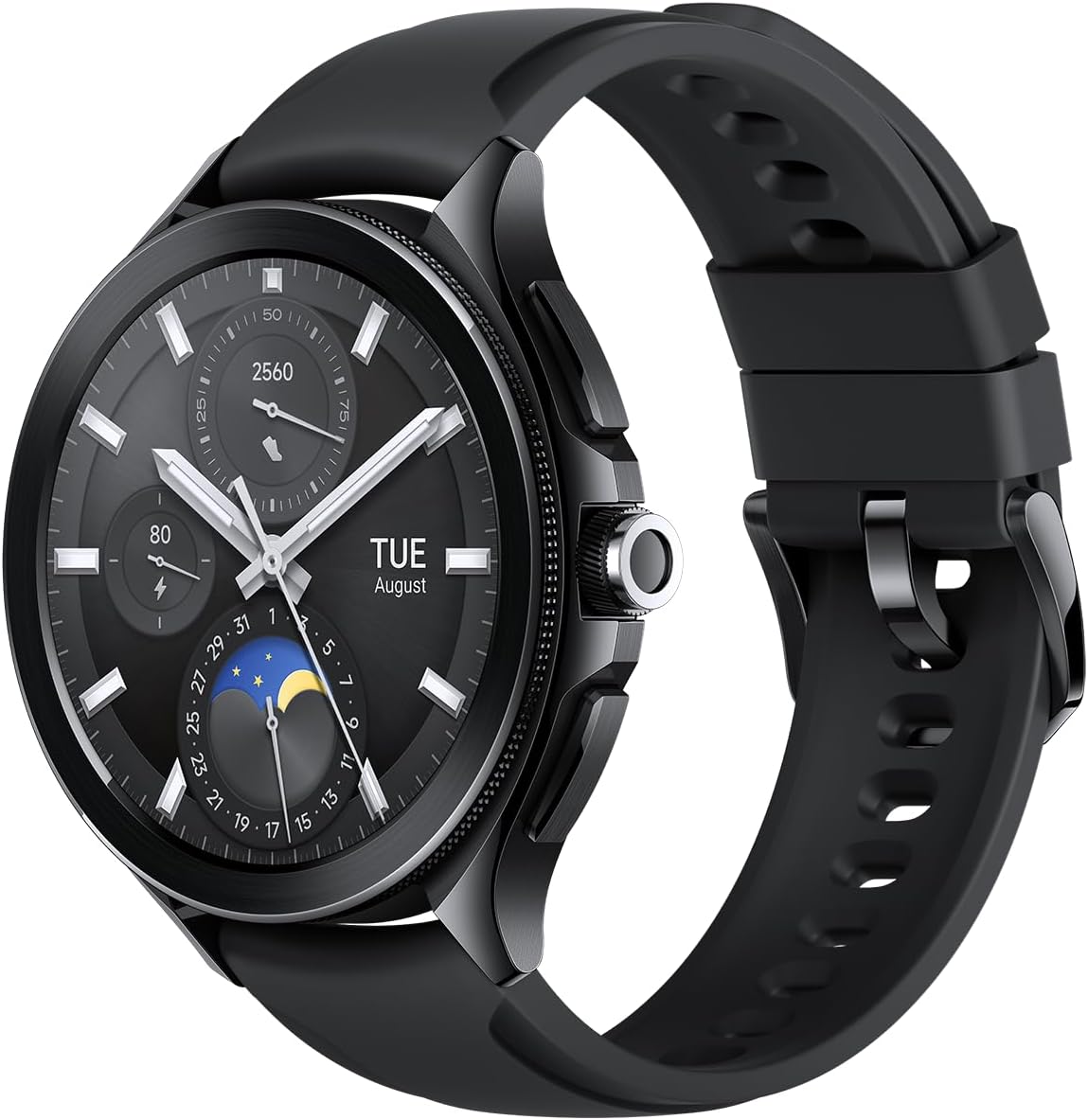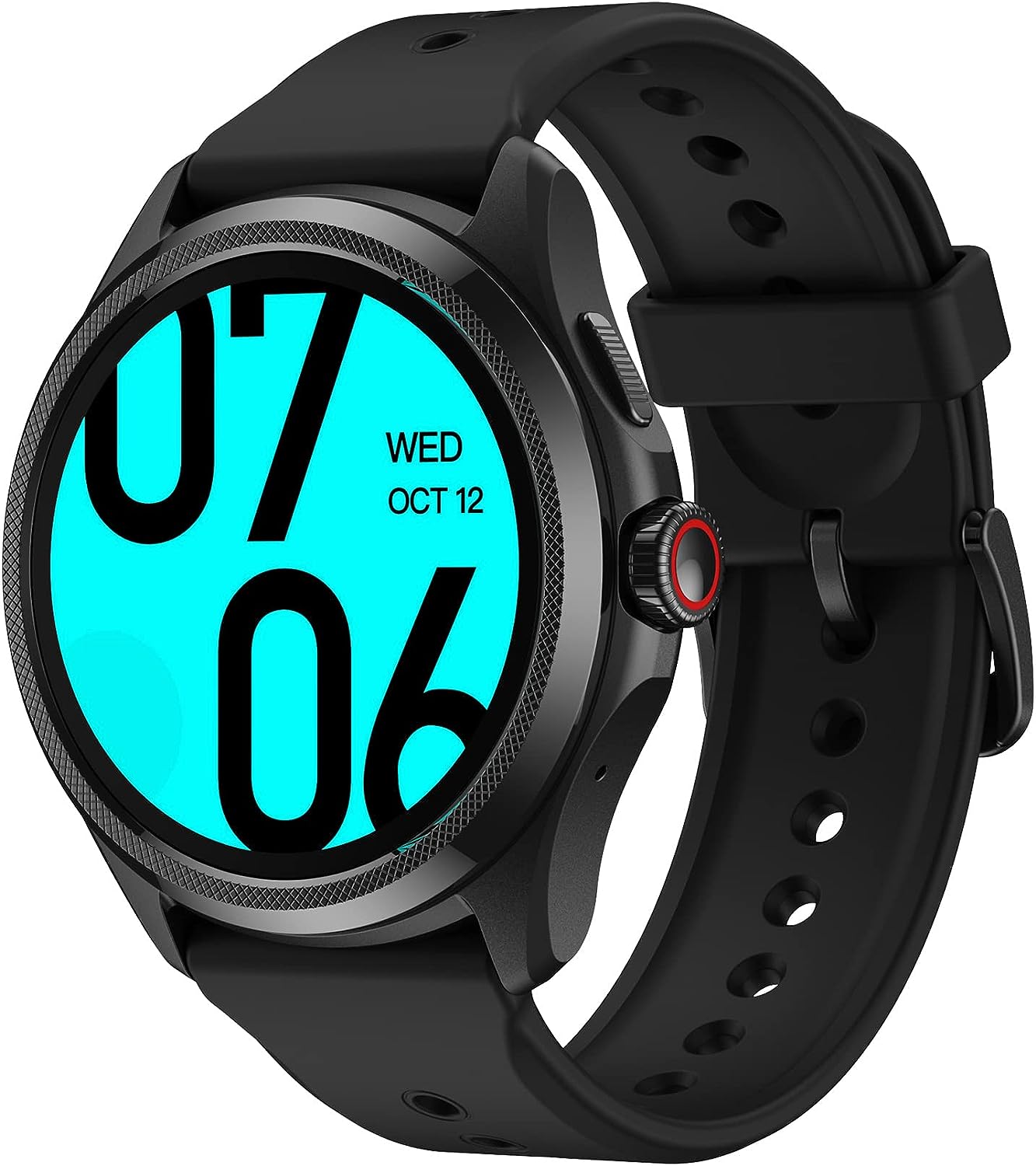You’d think picking a smartwatch these days would be easy. But the truth? It’s a minefield. Every model promises to be a fitness tracker, a health monitor, a smart assistant, and somehow still a stylish everyday accessory. And yet, most of them manage to fall short in at least one of those categories. So when we lined up the Xiaomi Watch 2 Pro, the Amazfit Balance, and the TicWatch Pro 5, we weren’t expecting a clear winner. Turns out—we were wrong.
What makes this trio so interesting is that they all aim for that same sweet spot: not too sporty, not too luxury, not too basic. They want to be your everything watch. But dig a little deeper, and the gaps start to show. One model, in particular, ends up delivering that rare mix of power, precision, and polish that doesn’t leave you choosing between good battery or better tracking.
Let’s break it all down—design, fitness, brains, battery—because these watches may look alike, but they live very different lives once you strap them on.
They all look good, but only one feels expensive

At first glance, all three models tick the same design box: round face, metal frame, interchangeable straps. But after a few days on the wrist, differences in comfort, finish, and feel start to matter.
The Amazfit Balance is by far the lightest, and if you want something that disappears into your wrist, that might be the one to lean toward. It’s slim, modern, and surprisingly understated. But you also feel that featherweight build—it’s comfortable, yes, but also a bit less premium.
The TicWatch Pro 5 goes the opposite route. It’s chunky. Durable. You look at it and think, “Okay, that’s built for impact.” And to be fair, it holds up. But not everyone wants a mini tank on their wrist. Especially not if you’re dressing up.
Then comes the Xiaomi Watch 2 Pro, and this is where things click. It’s the most polished, most versatile design of the three. The thicker bezel gives it that classic watch vibe, while the high-quality materials and balanced proportions make it feel solid without being bulky. It walks that fine line between business casual and weekend-ready, and not every smartwatch gets that right.
Display showdown: brightness helps, but balance wins
All three watches offer crisp AMOLED screens. Nothing looks low-res or washed out. But when you get picky—which we always do—some things stand out.
The Amazfit Balance gets points for its 1.5″ display and blinding 1500-nit brightness. Yes, it’s sharper in direct sun. It’s also slightly bigger. But unless you spend every day outdoors, that extra brightness doesn’t transform the user experience.
The TicWatch Pro 5 and Xiaomi Watch 2 Pro both use a 1.43″ AMOLED panel with 466 x 466 resolution—and in practical use, they feel more refined. The text rendering is smoother, the animations cleaner, and everything just pops more. The difference is subtle, but once you see it, you can’t unsee it.
What really gives the Xiaomi the edge here is consistency. It delivers strong contrast and vibrant colors without sacrificing battery, and its always-on mode looks less dimmed down than the rest.
Battery life: the one place TicWatch hits hard
Let’s not sugarcoat it: the TicWatch Pro 5 is a beast when it comes to battery. 628 mAh means this thing keeps going even if you forget to charge it for a couple of days. That’s a big win for travelers, adventurers, or anyone who doesn’t want to baby their device.
The Xiaomi Watch 2 Pro comes in second, with 495 mAh, and it holds up surprisingly well. With moderate use—notifications, workouts, and some GPS—you’re looking at two solid days, and full charges take just 45 minutes. Not the best, not the worst, but definitely usable without babysitting it.
The Amazfit Balance? Great efficiency, but slower to recharge. It’s got the smallest battery at 475 mAh and needs almost two hours to hit 100%. Not a dealbreaker, but compared to the fast-charging rivals, it shows.
Health tracking: all three are smart—but only one thinks ahead

Let’s talk sensors. Because what good is a smartwatch if it can’t tell you what’s happening with your body?
All three devices cover the basics: 24/7 heart rate, SpO₂ monitoring, sleep tracking, and stress analysis. No surprises there.
But then come the extras. The Amazfit Balance leans hard into its BioTracker 5.0, layering in ambient light, temperature, geomagnetic, and air pressure data. It even supports AI-based fitness coaching, which is a nice bonus for those who want guided workouts or adaptive training.
Then there’s Xiaomi, which drops the mic with Bioelectrical Impedance Analysis (BIA). That means it can track body composition—fat percentage, muscle mass, water levels—with a tap. If you care about more than just heart rate and steps, this is the only one that digs deeper into metabolic data.
TicWatch Pro 5, unfortunately, skips both AI training and BIA. It’s reliable, it’s accurate, but it doesn’t evolve with you, which can make it feel a bit dated in a feature-rich crowd.
Fitness modes: two go the extra mile
When it comes to sport tracking, quantity does matter—especially if you don’t just run and cycle.
The Xiaomi Watch 2 Pro and Amazfit Balance both support over 150 workout modes, while the TicWatch Pro 5 caps out just above 100. That’s not a huge drop-off, but if you’re into less common activities—HIIT, rowing, martial arts—it’s something to think about.
What sets the Balance apart is its AI-powered fitness system, which adapts and adjusts based on your habits. It doesn’t just log your run—it figures out what kind of run you should do next. That’s smart, and it adds real value over time.
Still, the Xiaomi Watch 2 Pro matches most of those features—and adds more precision with its extensive sensor suite. Workout analysis feels more tailored, and paired with BIA, you get a much richer overview of how your body responds to training.
Compatibility: one plays nice with everyone
Here’s where Amazfit gets a major win—it’s the only one that works with both Android and iOS. If you’ve got an iPhone, or live in a mixed-device household, the other two are dead ends.
Xiaomi and TicWatch are Android-only, and while their integration is tight, it’s limiting. You either commit or you’re out.
So if platform flexibility matters—or you think you might switch phones down the line—the Amazfit Balance is the safest pick.
Smart features: Wear OS brings the muscle

If you’re an Android user, Wear OS unlocks a whole new level of functionality. And both Xiaomi Watch 2 Pro and TicWatch Pro 5 run it natively.
That means Play Store apps, Google Assistant, calendar syncing, and even contactless payments via Google Wallet. You’re basically wearing a mini Android device on your wrist.
Amazfit Balance runs on Zepp OS, which is fast, lightweight, and buttery smooth—but you don’t get Google apps or third-party installs. That’s the trade-off: efficiency for flexibility.
Still, if you want Spotify controls, navigation, or app-based messaging, Wear OS wins. And between the two, Xiaomi just pulls ahead by feeling better integrated and slightly more polished in transitions.
Build and durability: tough vs stylish vs sleek
This one depends on your lifestyle.
The TicWatch Pro 5 is built like a tank, no doubt. If you’re outdoors a lot, drop things often, or need something that can take a hit, this is the one.
Xiaomi walks the middle line—it’s solid and stylish, with a slightly more premium touch. It doesn’t scream “rugged,” but it doesn’t feel fragile either.
The Amazfit Balance is the lightest and most wearable, but it’s also the least confidence-inspiring in rough conditions. Great for everyday life. Less so for accidental drops on concrete.
And now, let’s be blunt…
After living with all three watches, there’s a clear hierarchy. The TicWatch Pro 5 is tough, long-lasting, and functional—but it skips on some of the most forward-thinking health features. The Amazfit Balance feels light, sleek, and inclusive (hello, iOS users), but it limits your smart features and charging speed.
Then there’s the Xiaomi Watch 2 Pro, which just nails the balance. Top-tier health metrics. Powerful sport tracking. Rich display. Smart integration. Fast charging. Wear OS flexibility. And a design that works everywhere.
It doesn’t try to be flashy. It just gets everything right. And that’s what makes it the smartwatch to beat.



